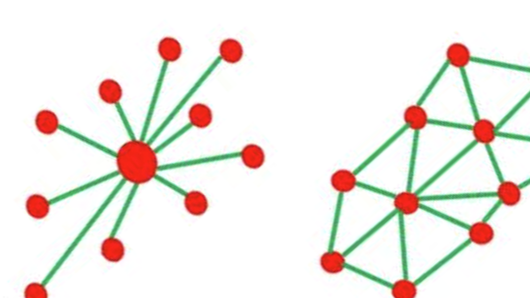Making Your Business More Entrepreneurial

# Leadership
By Vitaly Geyman, Managing Partner of Quantum Leaders
September 18, 2023
Big shifts are happening across many industries including print, which has been due for disruption for a while. Digital printing technology has provided many opportunities for new products and services through economies of scale. But like many other tech industries, products are no longer enough -- the market is seeking solutions beyond those products.
To take advantage of this digital evolution, organizations themselves must evolve. It requires people and structures that are more intrapreneurial and customer-oriented, valuing relationships over transactions.
NEW MINDSET
To compete, today's leaders require a different perspective, a new mindset around what is an organization. If you view an organization as a production machine, then you will naturally try to optimize it like a production line. If you see client's needs as merely buying a product with certain specifications, then you will optimize for transactions.
This view worked well through most of the last century, in a more predictable, slow-changing environment. It simply does not work in today's volatile environment where customers are seeking an experience and a solution.
Viewing an organization as a complex living being that is constantly growing and adapting in relationship to other living beings is a more helpful mindset and is closer to the actual way an organization operates. Machines function solely on transactional value. In contrast living beings require an experience around the transaction that includes a quality relationship.
The conventional wisdom of product-oriented companies is that if we provide the customer with a certain level of functionality then our job is done. For the printing industry, this is reflected in positioning based on providing superior printing quality, quick turnaround times, economical short runs and so on. While these are important factors they are not enough in today's highly competitive environment.
Revenue is determined by the customers' perception of value. As the following formula indicates, functional value is only one portions of perceived value:
Revenue = PV = FV + EVPV - Perceived Value, FV - Functional Value, EV - Experiential Value
While most technically oriented companies are focused on providing functionality, they forget that customers are living beings and value their experience of interacting with the company as much as with the product.
Experiential value involves addressing such customer questions as:
• Do they feel truly listened to and met on a deep psychological and business level?
• When something goes wrong, do they feel like they are dealing with a trusting partner that is willing to compromise and negotiate a win-win solution or do they feel being taken advantage of?
• Is it just another transaction or is there a sense of developing a mutually beneficial relationship?
The experience a customer has relating with a company is almost always a reflection of how the internal staff relate to each other. For example, a strongly siloed organization will relate internally as transaction between the silos and customers will be just another transaction.
In The Living Organization™ (TLO) framework each department is a unique living being that recognizes their success is a function of the relationships not just the transactions. This easily translates to being in close relationship with customers.
Creating a customer focused culture involves much more than just customer-facing staff. It involves the whole organization building strong internal relationships, collaborating between departments to deliver not only functional but experiential value.
NEW STRUCTURES
As the follow diagram indicates we are seeing a trend from centralize leadership towards distributed leadership. This is being driven by the need to be able to be closer to the customer. It allows those who are in direct contact with customers, as well as those who support them, to have the autonomy to build that all-important relationship.

NEW LEADERSHIP
These new structures require a shift in the role of leadership. In centralized structures the leader is the programmer and supervisor of the machine. In distributed organizations the leader sets the vision and context. He or she develops the capability and maturity of the organization, enabling the ability to make those critical customer relationship decisions.
TLO FRAMEWORK
The TLO Framework is based on the principles of the book "The Living Organization" by Norman Wolfe. While overseeing HP's US administration division, Norman used the TLO principles to transform it into the best-performing division in the world. Since then, the framework has been successfully applied to small and medium-sized companies across multiple industries. TLO Framework provides a path for any organization to move step by step towards a more entrepreneurial, customer focused way of working.
The first step is to understand the deep reason the organization exists, the impact it is here to make, and for whom. This includes not only understanding the customers' needs for product functionality but for the experience the customer is looking for.
The framework assists leaders at all levels of the company to develop a Strategic Compass™ that guides the organization each step of the way on its journey from products to solutions.
Special Contribution Agreements™ are used at individual, team and department levels to define what each entity will contribute to the organization's ability to meet the needs of the customer. This approach supports everyone to take ownership for their part of the contribution. It shifts their mindset from that of an employee to that of an owner -- from transactional silos to partnerships that support the success of the whole organization.
Vitaly Geyman is a Managing Partner at Quantum Leaders Inc., a boutique consulting company specializing in strategy execution and organizational performance improvement. Vitaly has worked with more than 150 leaders worldwide, helping them rapidly grow their company valuation and profitability in the most innovative and sustainable ways. For more information visit QuantumLeaders.com.
Sign in or Join the community
Innovating Print, Together

Create an account
Innovating Print, Together
